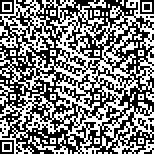| 摘要: |
| 于1994年1月和11月在青岛太平角和荣成海带育苗场分别采集海带成熟孢子体和幼孢子体,采用培养基诱导方法,对4种培养基诱导海带愈伤组织的效果,成熟海带孢子体的不同部位在MS固体增富培养基中形成愈伤组织的能力进行了比较;研究了添加不同成分的MS固体增富培养基对海带愈伤组织形成的影响,并比较了4种除菌方法的效果。结果表明,PESI固体培养基和MS固体增富培养基是诱导海带愈伤组织的理想培养基,其诱导率分别为75.5%(24d)和67.3%(90d)。在MS固体增富培养基中培养120d后,生长部、假根和柄部的愈伤组织诱导率分别为80%、78%和67%。在MS固体增富培养基中同时添加6种成分,诱导率为12.5%;而当不添加任何成分时,诱导率为3.2%。1.5% KI结合无菌水的处理方法,对海带组织块的除菌效果比较理想。 |
| 关键词: 海带 愈伤组织 组织培养 |
| DOI: |
| 分类号: |
| 基金项目:国家自然科学基金资助项目,39400076号;国家攀登计划B资助项目,PD B-6-4-1号 |
附件 |
|
| HIGHLY EFFICIENT CALLUS INDUCTION OF LAMINARIA JAPONICA |
|
WANG Xi-hua, QIN Song, ZENG Cheng-kui (C.K. Tseng)
|
|
Institute of Ocaenology, The Chinese Academp of Scieiences, Qingdao, 266071
|
| Abstract: |
| To obtain a large amount of callus and to look for an effective method for bacteria elimination, experiments were undertaken from January, 1994 to July, 1996. The materials used were mature sporophytes and young sporophytes of Laminaria japonica. Mature sporophytes were collected from Taipingjiao Bay, Qingdao in January, 1994, and young sporophytes were provided by Rongcheng Feeding Farm in November, 1994.
MS liquid medium; enriched MS medium [with mannitol (0.030 g/ml), yeast extract (0.001 g/ml), kinetin (0.1076 μg/ml), NAA (1.86 μg/ml), VB2 and VB12 (0.5mg/ml each)]; ASP-C-I solid medium and PESI solid medium were used. Solid medium was made from liquid medium by solidification with 1.5% agar. Meristematic zone, stipe and rhizoid were cut off from the mature sporophytes. They were cut into (2–3)mm ×(2–3)mm pieces. Mannitol + yeast extract, VB2 + VB12, Kinetin +NAA and all above-mentioned additives were added into MS solid medium respectively to compare their effects. Four techniques for eliminating bacteria were tested: (1) 1.5% KI (w/V) + 70%(V/V) alcohol; (2) 1.5% KI + NaCIO (0.01 g/ml); (3) 1.5% KI + autoclaved water; (4) antibiotics: Str,. Str. + Lm., Amp. and Km. Young sporophytes were used in this test.
Tissue pieces were cultured at 10.0±0.5°C, about 1500lx (10h light /14h darkness) light. All media were renewed every 15 days. Large amount of precipitates occurred in MS liquid medium after 7 days and pH decreased during the culture, which affected the test. No callus formed after five months of induction. No positive result was obtained using ASP-C-I solid medium, either. But in enriched MS solid medium (modified by all the additives mentioned above) and PESI solid medium, inductive efficiency were 67.3% (90d) and 75.5% (24d), respectively.
By using different tissues in enriched MS solid medium, inductive efficiency was: meristematic zones > rhizoids > stipes (120d). By using sterilization method (3), none of the tissues was contaminated, but all tissues were contaminated by using method (1). Most tissues were contaminated by using method (2); by using Str,. Str. + Lm., Amp. and Km., the contaminated rate was 87%, 50%, 88%, 0% respectively. The inductive efficiency was 12.5%, 11.6%, 6.9%, 6.6% and 3.2% by using enriched MS solid medium, MS enriched only with mannitol + yeast extract, MS enriched only with VB2 + VB12, MS enriched only with kinetin + NAA, and MS without any additive, respectively.
The results show that PESI solid and MS modified solid media are ideal media for callus induction of Laminaria japonica. |
| Key words: Laminaria japonica, Callus, Tissue culture |
